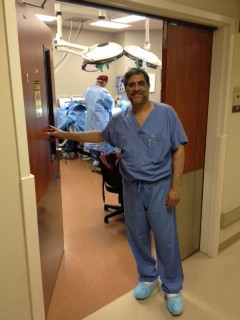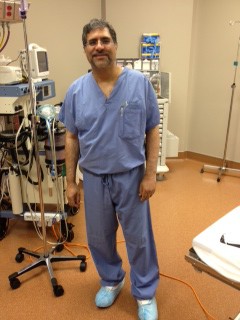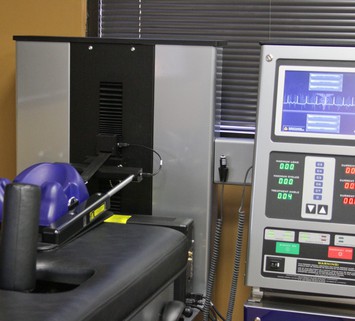Are you or a loved one considering kyphoplasty as a solution for debilitating back pain? In this article, we examine a crucial question: is kyphoplasty safe for elderly patients? Through an exploration of recent research, discussion of potential complications, and a careful evaluation of the risks versus benefits, we aim to provide invaluable insights for those contemplating this medical procedure.
What is Kyphoplasty?
Kyphoplasty is a minimally invasive surgical procedure used to treat vertebral compression fractures—a common source of back pain, particularly in the elderly. During kyphoplasty, a surgeon inserts a small balloon into the fractured vertebra and inflates it to create space. The cavity is then filled with bone cement to stabilize the bone and reduce pain. This procedure aims to restore vertebral height and alignment while providing relief from pain caused by the compression fracture.
Who is a Candidate for Kyphoplasty?
Candidates for kyphoplasty typically include individuals experiencing severe back pain due to vertebral compression fractures, often resulting from osteoporosis or other conditions that weaken the bones. These fractures can lead to decreased mobility, height loss, and a hunched-forward posture (kyphosis).
Candidates for kyphoplasty usually have fractures that fail to respond to conservative treatments such as pain medications, rest, and bracing. Additionally, candidates should have generally good health and be able to undergo anesthesia and the surgical procedure safely. However, a potential patient’s suitability for kyphoplasty is ultimately determined by a thorough evaluation by a medical professional.
Is Kyphoplasty Safe for Elderly Patients?
Kyphoplasty is generally considered safe for elderly patients when performed by experienced surgeons. Like any spine surgery, there are potential risks, including infection, bleeding, nerve injury, or adverse reactions to anesthesia. However, kyphoplasty is minimally invasive, which typically results in smaller incisions, less tissue damage, reduced blood loss, and faster recovery compared to traditional open surgery.
Overall, procedures like kyphoplasty can result in improved pain relief and quality of life for elderly patients suffering from vertebral compression fractures. It's essential for patients to discuss the potential risks and benefits with their healthcare provider to make an informed decision.
Preparation for Surgery in Elderly Patients
Preparing for a surgery like kyphoplasty involves several important steps, particularly for elderly patients who may have additional health considerations. Here's a detailed guide on how elderly patients can prepare for kyphoplasty:
Consultation with Healthcare Provider
Elderly patients should schedule a comprehensive consultation with their healthcare provider, typically a spine specialist or an orthopedic surgeon, to discuss the procedure.
Preoperative Evaluation
The healthcare provider will conduct a thorough preoperative evaluation, which may include blood tests, imaging scans (such as X-rays or MRI), and possibly an electrocardiogram (ECG) or other cardiac assessments, depending on the patient's medical history.
Medication Review
Elderly patients should review their current medications with their healthcare provider. Certain medications, such as blood thinners, may need to be adjusted or temporarily discontinued before surgery to reduce the risk of excessive bleeding during the procedure.
Physical Activity
While maintaining overall fitness is essential, elderly patients should avoid strenuous physical activities in the days leading up to surgery. However, light exercises, such as walking or gentle stretching, can help improve circulation and promote overall well-being.
Smoking Cessation
Smoking can interfere with the body's ability to heal properly and increase the risk of complications during and after surgery. Elderly patients who smoke should consider reducing the amount they smoke or quitting altogether before undergoing surgery, as advised by their healthcare provider.
Home Preparation
Elderly patients should arrange for assistance with daily tasks and transportation to and from the hospital on the day of surgery. Additionally, a comfortable and safe home environment post-surgery is essential for a smooth recovery.
Advance Directives
Elderly patients should review and update their advance directives, including healthcare proxies and living wills, if applicable. These documents outline the patient's preferences for medical care in the event they are unable to communicate their wishes during or after surgery.
Follow Preoperative Instructions
It's crucial for elderly patients to follow any specific preoperative instructions provided by their healthcare provider. This may include fasting before surgery, showering with special antibacterial soap, and avoiding certain medications as instructed.
Support System
Having a strong support system in place, including family members, friends, or caregivers, can provide invaluable emotional and practical support during the preoperative period and throughout the recovery process.
What Elderly Patients Should Expect Post Surgery
After kyphoplasty surgery, elderly patients can expect a period of recovery and rehabilitation. Initially, patients may experience some discomfort or mild pain at the surgical site, which can typically be managed with pain medication prescribed by their healthcare provider. It's common for patients to notice an improvement in their back pain shortly after the procedure.
However, it's important for elderly patients to follow their healthcare provider's postoperative instructions carefully. This may include restrictions on certain activities, such as lifting heavy objects or bending, to prevent strain on the spine during the initial healing phase.
Elderly patients should also expect to attend follow-up appointments with their healthcare provider to monitor their progress and ensure proper healing. Physical therapy or rehabilitation may be recommended to help regain strength and mobility in the affected area.
In some cases, elderly patients may experience minor side effects, such as bruising, swelling, or numbness near the incision site, which typically resolve within a few weeks. Serious complications are rare but can include infection, blood clots, or nerve damage. Therefore, it is crucial for patients to report any unusual symptoms to their healthcare provider promptly.
Rely on Texas Spine Center for Back Pain Relief
Kyphoplasty presents a promising option for elderly patients seeking relief from debilitating back pain caused by vertebral compression fractures. While the decision to undergo surgery can be daunting, especially for older individuals, the benefits of this minimally invasive procedure, including improved pain relief and quicker recovery, are significant. However, it's essential for patients to make an informed decision by discussing their options with a trusted healthcare provider.
If you or a loved one is considering kyphoplasty or seeking more information about managing back pain, we encourage you to reach out to Texas Spine Center. Our experienced team is dedicated to helping patients regain mobility and enjoy a life free of back pain. Visit our website today to schedule a consultation and take the first step toward a healthier, pain-free future.



